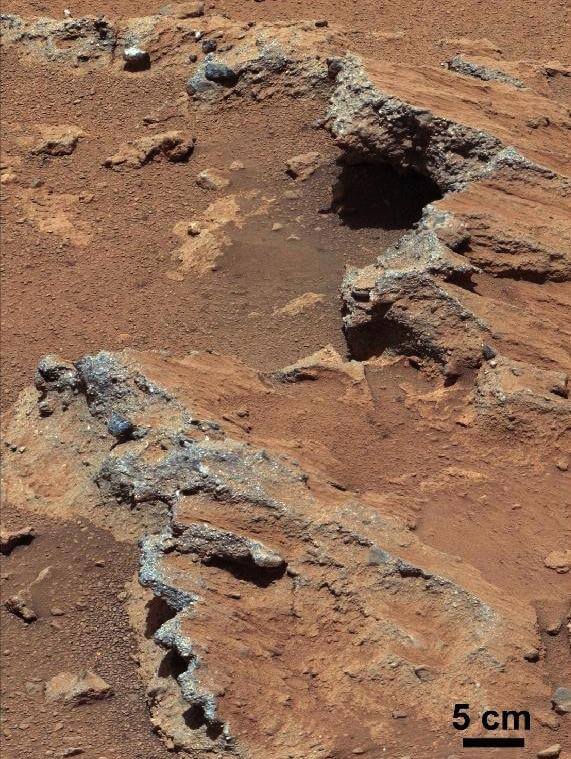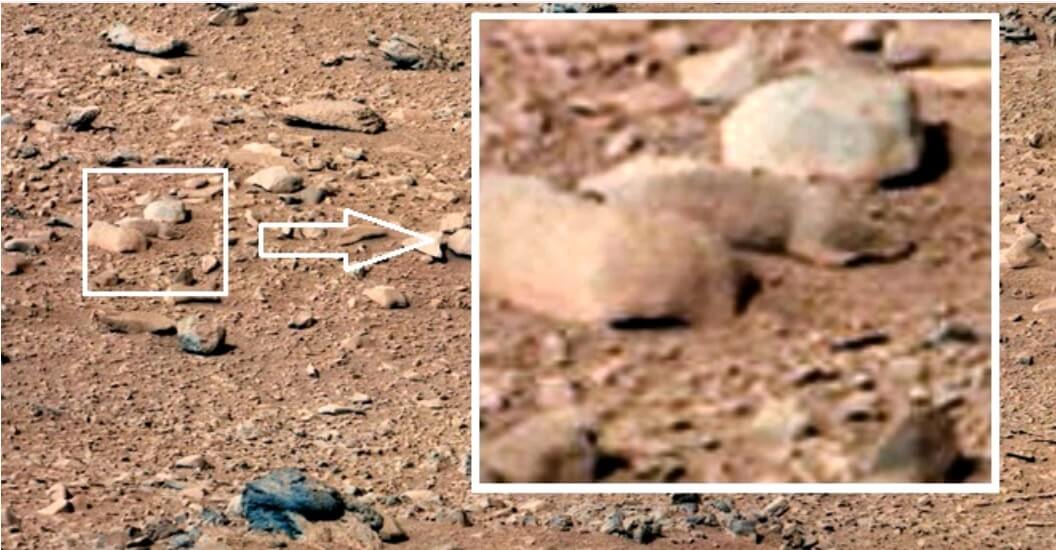While NASA is proving the theory of wet Mars billions of years ago, a Japanese obscurantist who scanned Curiosity's raw images decided to discover a mouse, or perhaps a lizard in one of the photographs.

A detailed analysis of what looked like pebbles that were photographed and examined by the Mars rover Curiosity last year are part of an ancient stream
The rocks are the first ever found on Mars that also contain gravel - from the size of grains of sand to the size of golf balls. They allowed the researchers to calculate the depth and speed of the water that once flowed through this area.
"We completed an in-depth assessment of the gravel and pebbles to characterize their size, distribution and tendency to round," says Rebecca Williams of the Planetary Science Institute in Tucson, Arizona, the lead researcher who published about these stones in the journal Science this week. "We came to the conclusion that our initial assessment in the fall was correct. At the very least, the water flowed at a pace similar to the pace of walking - a meter per second, and reached a depth in different places in the channel ranging from the depth of an ankle to the depth of an adult's thigh.
Three such rocks were studied using the remote imaging capabilities of Curiosity's mast camera during its first 40 days on Mars and formed the basis of the new report. One of the rocks, Goulburn was very close to the landing site of the box from which the robot came out. The other two, Link and Hottah, are 50 and 100 meters to the southeast. The researchers also used Curiosity's laser camera to study the Link rock.
These combinations look surprisingly like deposits left in a stream that cut across the earth," says Williams. "Most people are familiar with the round shape of pebbles. Their round shape is due to erosion. The water eroded them from all sides. Seeing something so familiar about another world is exciting and satisfying."
It is estimated that these rocks were carried away by the stream to a distance of several kilometers from their original location.
However, this message from NASA, which is very important, lost its premiere in the jungle known as viral distribution, to a photo that was also taken on Mars in September 2012 by the same Mars rover - Curiosity, and in which obscurity enthusiasts claim that nothing less than a mouse is photographed in a sleeping position with its head down On the Martian soil.
This is an image that was located by a determined person in Japan who recently scanned dozens of raw NASA images. A post on UFO Sightings Daily shows what appears to be a creature with arms, legs and a tail lying between two rocks on Mars. The reptile enthusiasts debated whether it was a mouse or a lizard. The abami fans do not rule out the possibility that this is a staged image by NASA, which is responsible for placing the stones on top of each other so that they look like a living creature. In any case, if a living being had really been discovered on Mars, wouldn't NASA have announced it clearly?
Anyway, here is the picture before you.

For NASA's announcement about the ancient water stream on Mars

6 תגובות
NASA also hides obscurities within the shapes of clouds....
If not the mountain, then the stream gave birth to a mouse...
Thanks
Thanks,
Paragraph 3, line 3, ch
Imagination is developed in a person with a less fine brain